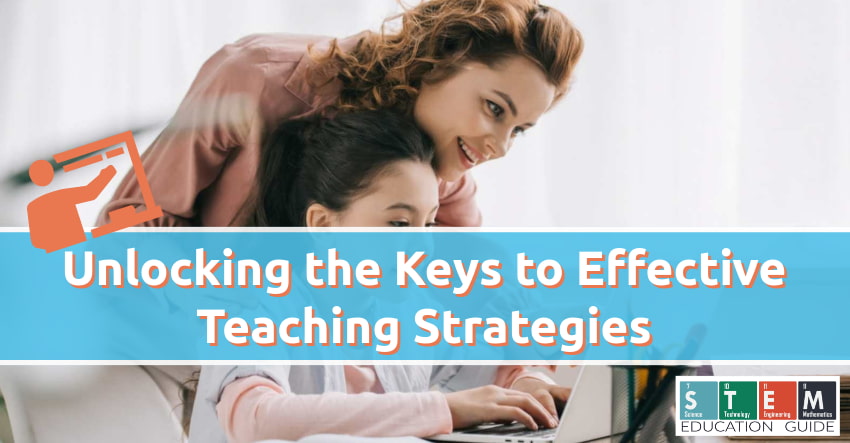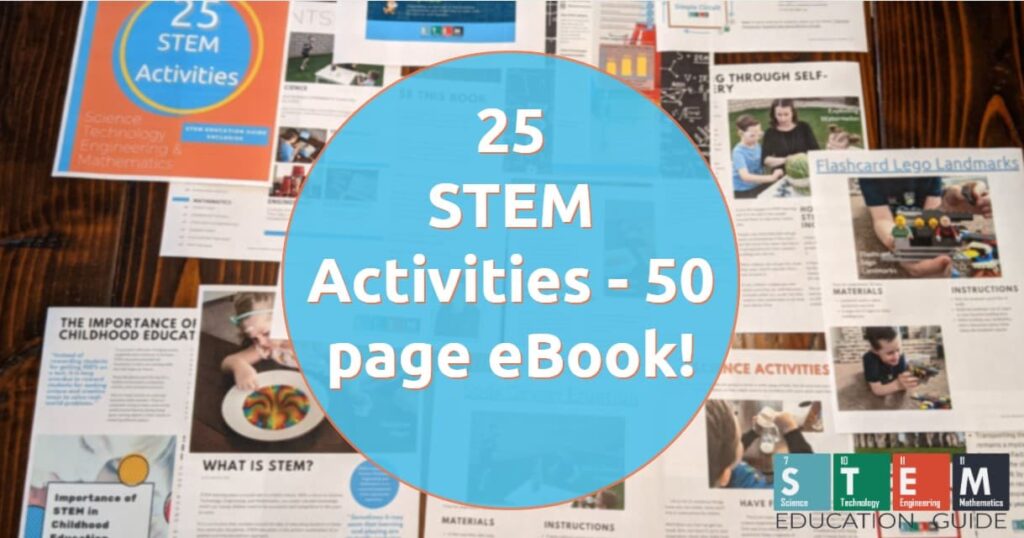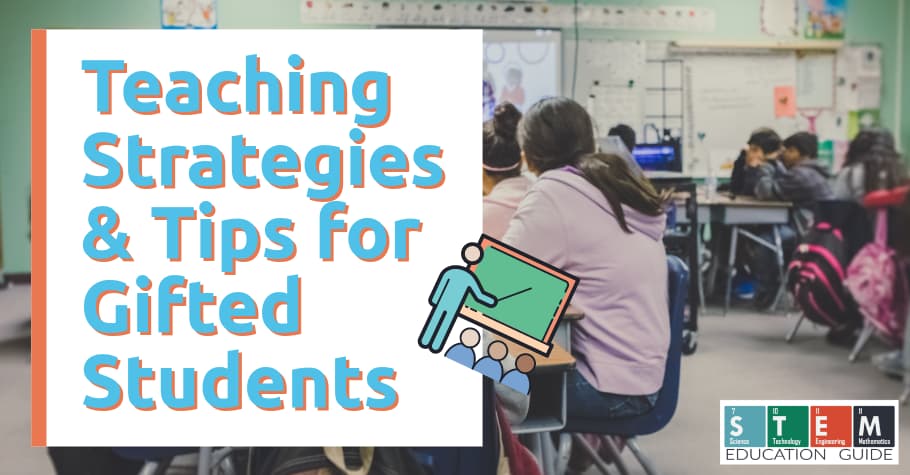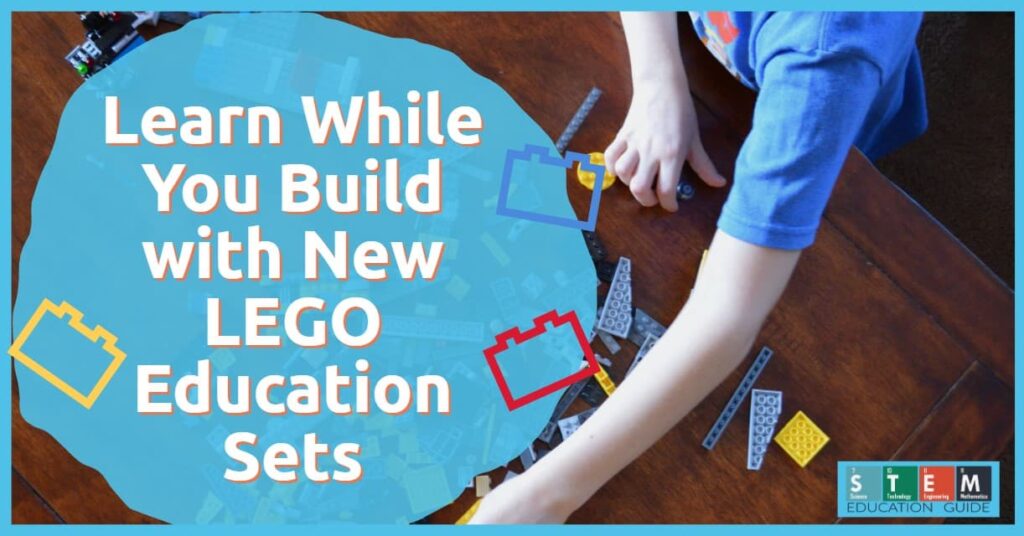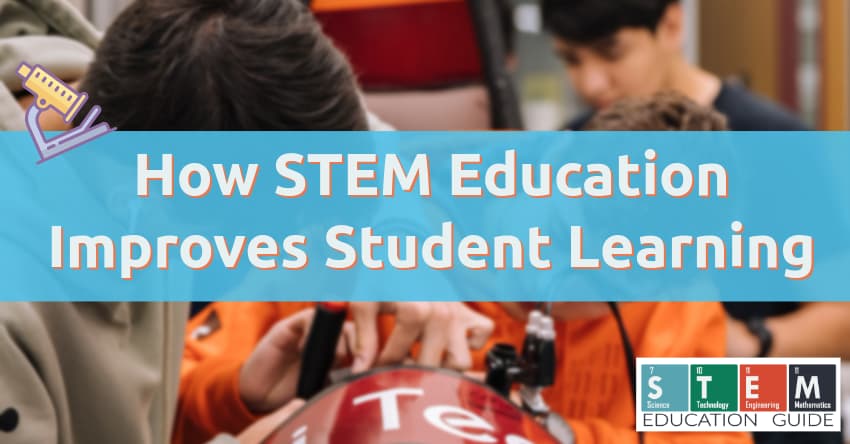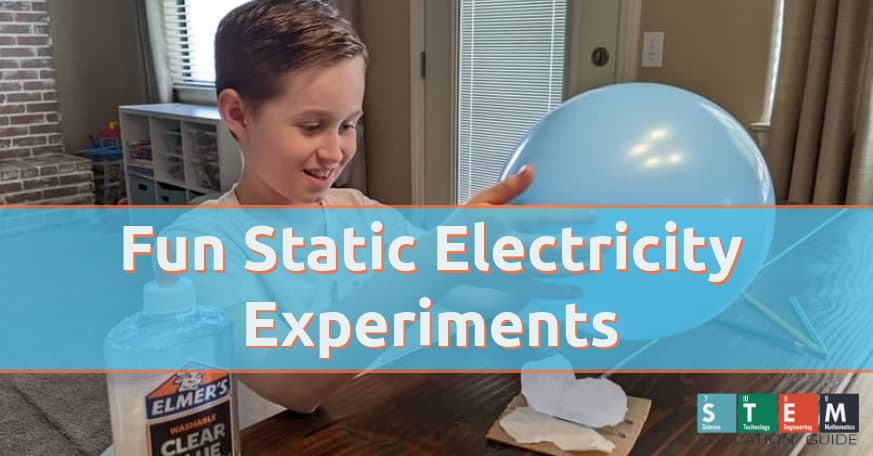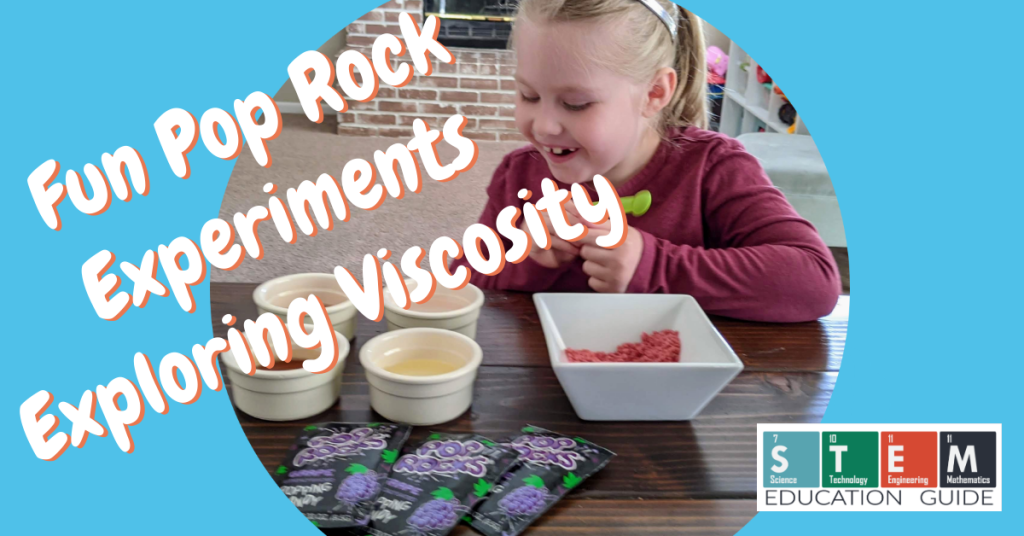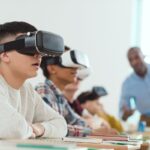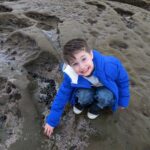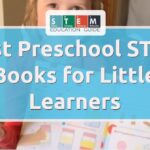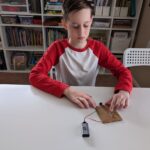Today more than ever, teachers have access to a number of different teaching models and strategies.
This provides a wealth of resources and tools, and at the same time, can cause overwhelm and decision fatigue. Through our own experience homeschooling our children and loads of research. We have included 10 of the most powerful and effective strategies that we have seen success with.
You can also lean on your students for a bit of guidance. Guidance they may not even realize they are offering. When you are feeling stuck in what direction to go, lean on your students. Look to them for what type of powerful and effective teaching strategy is needed.
Open your eyes and your perspective to understand what it is that your students need.
If you’d like some STEM activity ideas, make sure to grab our FREE eBook of 25 STEM activities here.
Table of Contents
Understanding Student Needs
Knowing what your students need evolves throughout the school year. It is a pivotal time, though, at the start of the school year, to get a scope of what type of learners you have in your classroom.
Before the actual teaching begins, you have an opportunity to set yourself up for success for the entire year. You have a group of students to build relationships with, form respect, set guidelines, and know who they are as kids.
What motivates them, what catches their interest, and assessing for the varying degrees of learning styles is key. All effective teachers know that student learning starts with relationship building.
That start of the school year is your time to communicate effectively with your students and establish that classroom respect. Modeling is a secret sauce to effective teaching. Your student’s are always observing. As you’ve started to establish those bits of structure, then comes the learning!
Do you have gifted students? Please check out our article, Teaching Strategies & Tips for Gifted Students: What You Need To Know.
Invite in New Topics
Whether it is the start of the year or smack dab in the middle. Inviting new topics, in varying degree of ways, keeps the intrigue alive. Kids, no matter what age, are naturally curious beings. One of the easiest ways to do this is by inviting in new topics that are relevant to them and their life.
A STEM (science, technology, engineering, and math) based curriculum is an example of using real-world topics to invite in relevant and fresh topics. To find effective teaching strategies, there has been extensive research on how STEM education improves student learning. It encourages independent and collaborative exploration surrounding a specific subject matter pertaining to a real-world topic.
An example of this is, let’s say, a student asks a question about the water fountain next to your classroom. Which then expands into a full conversation surrounding drinking water in their town and how it is cleaned. This leads to so many questions and opportunities for research.
They then start to research what makes up their drinking water, how it travels from the main source to our taps, or what the municipal water treatment system does to make it accessible to drink. Maybe they then build their own water filters to test out how clear the water is.
The students are off to the races and are motivated by a topic that impacts their daily life – drinking water. Bonus, this is also a form of inquiry-based learning.
An Effective Teaching Strategy is to Expand on Prior Knowledge
Whether your topic is introduced by a student question or a question you raise on your own. An effective teaching strategy is to allow students to share what they already know. Nothing makes a student more proud than being able to share what they know.
This is such an important part of the learning process and the learning experience for students.
Some teachers might even take the KWL approach. This can support lesson planning, as well as how to assess and evaluate student progress. After inviting in a new topic, you can ask students the questions, “what do you KNOW?”, “what do you WANT to know?” and last, after questions have been answered, “what did you LEARN?”
Another way to foster students sharing what they know is by using small groups. In small groups, you can pair students together who can support one another and share what they already know. Remember, you are not the only teacher in the classroom!
Everyone is a teacher is a strategy that many teachers use without even knowing they are using an effective teaching strategy!
Students can teach one another, and this is an incredibly effective way for the students who are teaching to solidify their knowledge on a topic. It expands their ability to further comprehend a concept.
Kids love Legos, and they are a great teaching tool. Please take a look at our article, Learn While You Build with New LEGO Education Sets.
Planning for Instruction
The beauty of implementing teaching strategies like inquiry-based and cooperative learning is that the students are at the center of their learning. No matter the grade level, small group, and group work is a form of instruction that enhances the learning experience for students.
Why? Students thrive when they are given the opportunity to experience a sense of autonomy.
Having the freedom to ask and explore the questions that interest them is known to have benefits in student success.
What does this mean for you as the teacher? It might feel a bit daunting, but in reality, it gives you a bit of a break. There is less focus on knowing how many chapters in a hard textbook you are reading per week and more focus on how the progress of instruction is going. Planning for instruction is a big part of classroom choreography.
Every orchestra needs a conductor. The same goes for your own classroom. Students still look to you to help guide instruction.
It is your job to keep the flow of the learning process engaging and on track. Knowing when the right time is to ask questions, to challenge, and to pull out specific concepts and get students to think critically.
Last, students may not realize that they are learning definitions of specific words or working out math in their heads by measuring materials for that water filter. It is your job to hone in on those specific subjects. To utilize the context of their subject of interest to teaching concepts from engineering, tech, math, reading, and science.
It helps to know where your students are in the learning process and how to continue effectively engaging them week by week. Last, setting up the learning environment and adjusting it to fit the different learning styles, as well as the content of what is being learned, also requires planning and assessment.
Engaging Students in Learning
One of the easiest ways to find success in effective instruction is by engaging your students. Engagement is the anchor in all teaching strategies. It sparks motivation, interest, and rapport.
So many teaching strategies (like the ones already listed) have engagement embedded in them just due to the value that engagement holds.
If your students are not engaged, then they are not retaining the information you are offering. They are not utilizing so many skills that engagement strategies provide. Skills like brainstorming, reflection, comprehension, communication, and cooperation. Skills that are transferable outside of the classroom.
If you are starting to notice restless students, then breaking instruction by getting students involved is sure to smooth out that tension. It is also important to note that it is impossible to expect every single student fully engaged all the time.
You can certainly experiment, especially while getting to know each student and their needs.
Examples of effective engagement strategies might include think-pair-share, inviting in real world topics, quick writing prompts, and group work collaboration. You can also utilize movement in order to keep students engaged.
It’s an effective teaching strategy to allow them to come up to the whiteboard and write, have them break into shared thought groups when discussing their thoughts on a topic, or stand and deliver presentations.
The list for engagement is extensive, but the last we want to touch on is using mixed media for exploration. This is embedded in the STEM approach and bodes incredibly well. Allow students to research on tablets, present on projectors, watch videos, and experiment with hands-on materials.
STEM allows your child to appreciate nature and the processes of seemingly mundane things around them. Find out more about this in our article, How STEM Education Improves Student Learning.
Setting Goals and Expectations
Structure, structure, and more structure. When students have expectations and goals set for them, it puts them in the space of forward movement. It provides you with a sense of confidence and direction, which can, in turn, translate to students on confidence in their own progress.
An easy way of creating goals and also teaching students about goals is by utilizing the SMART (specific, measurable, attainable, results-oriented, time-bound) approach. Depending on the grade level, allow students to even set their own goals!
On another note, try to keep the focus on mastery goals. This lessens the pressure on students to feel like they need to perform to succeed. This supports more motivation and student achievement. Mastery goals are skill-based goals where students can provide knowledge and facts about what they’ve learned.
Once expectations and goals are set in place, then it is the teacher’s job to assess progress.
Assess and Evaluate Progress
For some teachers assessing and evaluating progress is their favorite part of the teaching process or their least favorite part. Wherever you lie on the spectrum, is it paramount that this is a part of your teaching strategy repertoire.
Assessment and evaluation lets you know where your students are in their learning, and what you need to do to adjust your teaching methods. There are several ways you can do this, and one of the most effective ways is utilizing a formative assessment while they are in the process of learning.
This allows you to adjust throughout the learning process rather than having to turn around. Formative assessments give you an idea of who is ready to move on, who needs more time, or who needs a different approach. The key is gathering as much information as possible in different ways.
Examples of formative assessments include exit and entry slips; students write down one takeaway when returning to school the next day or before they leave. Low-stakes quizzes and polls that are just for comprehension and assessment. Write for one minute about the meaningful things they have learned, interviewing each other or even using rubrics for self-assessment.
Communicate Effectively
This might be an obvious one, but it can be difficult at certain times in the school year. It is most important at the beginning of the school year.
Students need to know what you expect of them, and there needs to be consistency in those expectations. It might feel exhausting having to over-communicate, but it is so important for a smooth transition into the new year.
Students look to us for guidance even if they may not directly ask for it. They might push the boundaries of classroom expectations, and it is your job to communicate what you desire instead. Students need this type of structure in order to thrive. When they know what the expectations are, there is no guesswork involved for them.
Effective communication is not all about laying the ground rules. What also helps foster respect and safety is positive feedback, teacher engagement, and active listening.
Provide your students with positive feedback to let them know when they are doing well.
Engage with them and ask questions to get to know their needs and learning styles. When they are communicating, listen. Make sure they know you are listening as well. Reflect back on what you hear, and show them by incorporating their interests into instruction.
Remember, you are the choreographer and your students each have their own instrument that helps the music classroom music flow.
Check out our fun STEM activities in our article, Six Fun Static Electricity Experiments for Science Students.
Embrace the Each Learning Style
All of these effective teaching methods are universal no matter the grade level, but especially this one. What makes each school year different and exciting is that you have a new group of students with their own unique student learning styles. A different set of skills and interests that make the classroom community diverse.
In order to be an effective teacher, you must embrace each child and their own learning style. That is why diversifying your media for instruction as well as strategy is so important.
According to Thinkific, “when it comes to learning something new, we all absorb information at different rates and understand it differently too. Some students get new concepts right away; others need to sit and ponder for some time before they can arrive at similar conclusions.”
There are seven main types of learning styles. They are visual, auditory/aural, kinesthetic, reading and writing (verbal), logical/analytical, social/interpersonal, and intrapersonal/solitary learners.
Some students may embody multiple learning styles, and some may have a very distinct learning style. Whatever the case may be, this is why planning instruction and assessing each student’s needs is so important.
Diversify Your Teaching Strategies
With a diverse class and diverse learning styles, comes diverse teaching strategies. We have covered a lot of ground when it comes to the why behind diversifying your teaching strategies. What about the how?
Utilizing an approach like differentiated instruction (DI) can be useful. Differentiated instruction is broken into 4 categories, content, process, products, and learning environment.
Content: What the student is learning. A real-world topic the students have brought into the classroom? A specific theme like seasons, weather, or space? Next is how the student will get the information on that topic. Reading materials, CD-ROMs with information on the topic, learning from paired buddies, and researching on a tablet are all examples of how.
Process: This is how students master and comprehend the concept. You can create hands-on learning activities about the topic, and students can create an agenda to create a presentation, or have a quiet space to read books about the topic. Target different senses for different learners!
Products: This is the way students show what they’ve learned about the topic. They can present on the topic with peers, write a story, create a video, or create a game about the topic. Give students guidelines on what they need to present on, so they also know what to learn about.
Learning Environment: Creating a space that matches multiple different needs. Quiet spaces for quiet learners, desks for those working in groups, a reading and listening center for students to learn about the content, and allowing students to move around to each space.
The idea behind DI is to create a structure to support different learning styles and to also give students the freedom to explore what they feel pulled towards in the learning process experience.
Wrapping Up Effective Teaching Strategies
The options to provide effective instruction are endless. We are confident that these ten powerful and effective teaching strategies will support you in creating a thriving, buzzing, and curious classroom full of motivated students. The work you do is powerful and important, and we hope this gives you a bit of support.
Please take a look at our article, Fun Pop Rock Experiments Exploring Viscosity.

